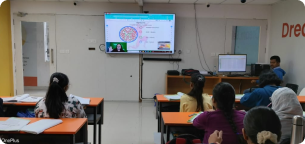




What is Apparent Frequency?
Apparent frequency is a phenomenon that occurs due to the relative motion between two objects. Imagine a vehicle approaching you while driving. We recognize the vehicle by its sound. When the vehicle approaches us, the sound increases. Whereas, when the vehicle passes, the sound fades away. This is due to the variation of frequency in sound waves. This phenomenon can also be correlated with the doppler effect. Moreover, the doppler effect can be observed in any kind of wave.
Apparent Frequency Formula
Apparent frequency as we know is the apparent change in frequency due to doppler’s effect. It is due to the rise of fall in the rate of displacement of air molecules. It can be observed when the source and observer are moving towards or away from each other at a certain speed. The formula for apparent frequency calculation is as follows:
Where f’ is the observed frequency, f is the actual frequency of sound waves, v is the speed of sound waves, vo is the velocity of the observer and vs is the velocity of source.
It can be seen from above that the change in apparent frequency is a function of the speed of both source and the observer.
What is the Doppler Effect?
Now, let us understand what a doppler's effect is with the help of different cases.
Case 1: When the source and observer are moving towards each other:
When the source and the observer are moving towards each other, the frequency at the observed end is higher than the actual frequency coming from the source.
Case 2: When the source and observer are moving away from each other:
When the source and observer are moving away from each other, the frequency at the observed end is lower than the actual frequency coming from the source end.
Case 3: When both source and observer are moving at the same speed:
When both source and the observer are moving in the same direction with the same speed, there will be no doppler effect.
The doppler effect formula and the doppler effect equation for each one of the cases are as listed below:
Doppler Effect Equation
The doppler effect formula and doppler effect equation are as given below:
For a source and observer moving away from each other, the formula for apparent frequency is given as:
The doppler equation for a source and an observer moving towards one another is given as:
Let us consider a few additional cases.
Consider the source is moving away from an observer. The observer in this case is moving towards the source. In this case, the apparent frequency at the observer's end will increase, while it will decrease at the source’s end. The apparent frequency of doppler effect equation in this case will be given as:
Consider another case where the source is moving towards the observer. The observer in this case is moving away from the source. Thus, the source is chasing the observer. The apparent frequency (or f’) due to doppler effect in this case will be given as:
As the source is chasing the observer, the apparent frequency for the source increases whereas for the observer it decreases. Let us further understand the relationship between velocity and frequency.
Relation between Frequency and Velocity
First, let us understand what frequency is? Frequency is the number of waves or cycles formed in one second. The relation between frequency and velocity is given as:
Solved Examples for Apparent Frequency Using Doppler Effect
Example 1: The apparent frequency of sound heard by an observer is 20% more than the actual frequency of the sound emitted by the source. The source is initially moving towards the observer with a velocity v. What will be the apparent frequency when the source moves with a velocity 2v? The observer in this case is stationary.
Solution:
We know that the frequency formula is given as:
As the source is moving towards the observer, the above formula becomes
Given:
The velocity is v in the first case which will double in the second case.
From the formula above we get:
We get:
For the second case we get:
We get:
Therefore, the apparent frequency is 8.33% more than the actual frequency.
Example 2: An observer is moving away from a stationary source. The apparent frequency of the observer is 30 percent less than the actual frequency. What will be the velocity of the observer? Assume the velocity of sound in air as 330 ms-1
Solution:
Given:
We know that
Thus:
Hence, the velocity of the observer is 99 ms-1.
Conclusion
The article above presents a thorough walkthrough of the apparent frequency and the doppler’s effect. Doppler effect as seen from above is observed in any kind of wave that has a relative motion. It could be light waves, sound waves, radio waves, and so on. The article specifically discusses the relative motion between the sound waves. It is seen how the relative motion between the sender and listener creates a change in the apparent frequency, which is due to doppler’s effect. The same has also been discussed using solved examples.






FAQs on Apparent Frequency and its Relation with Doppler Effect | JEE Important Topic
1. What is the impact of the doppler effect on radio waves?
Yes, the doppler effect does have an effect on radio waves. Doppler effect as we know will exist when there is relative motion between the source and the observer or between the sender and receiver. Let us understand the doppler effect on radio waves with an example. If a rocket ship is in the vicinity of a broadcasting station on earth, the frequency of the radio receiver tends to increase. Moreover, the doppler effect can also be used to measure the speed in radar sensors. When a fixed radio wave is transmitted towards an object that is moving away or towards the frequency of the bounced back, the radio wave changes.
2. What is the difference between actual frequency and apparent frequency?
Actual frequency is determined by a lot of factors. It is the frequency of the object at which an object will oscillate or vibrate. The frequency calculation formula or the actual frequency is denoted as



































